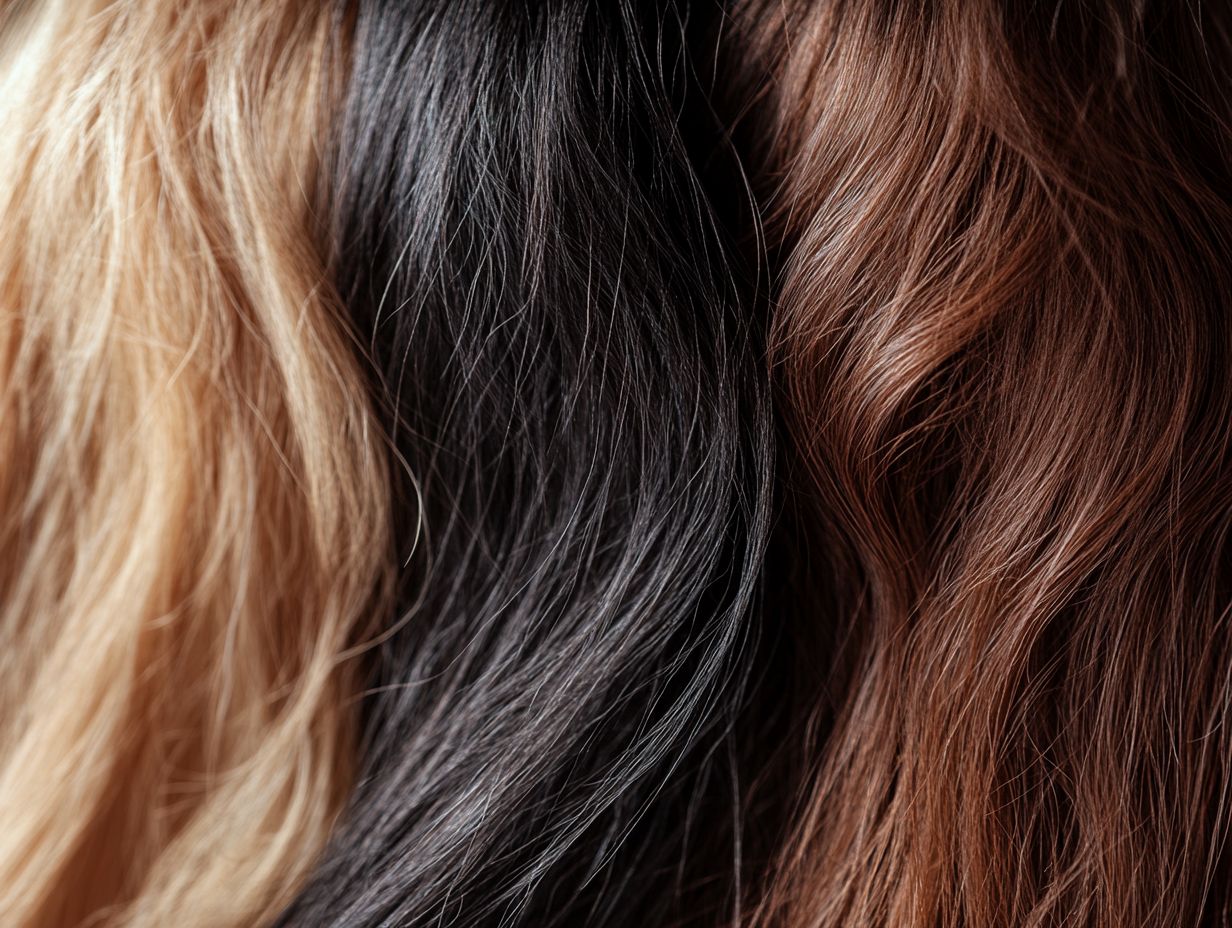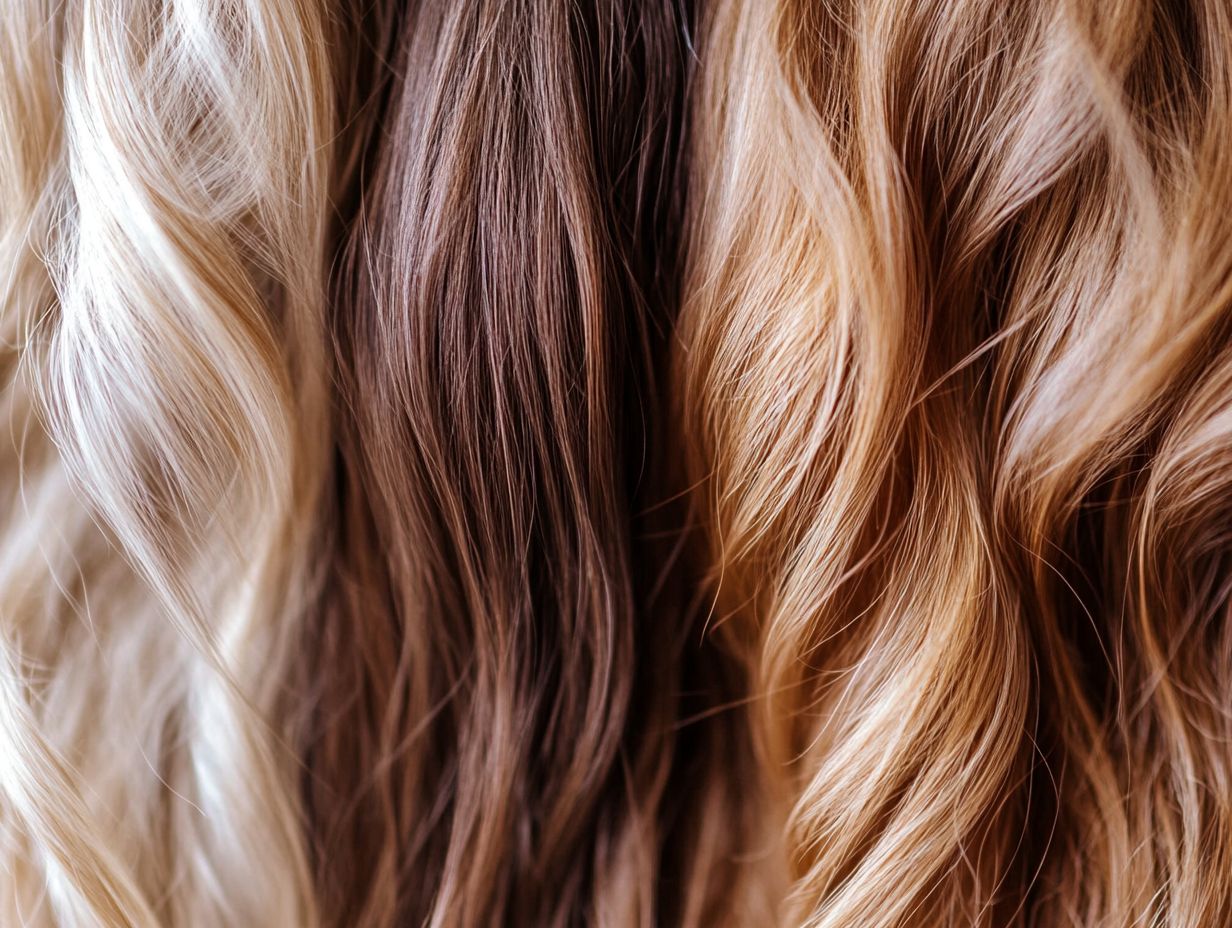Understanding hair porosity is essential for anyone looking to maintain healthy, beautiful hair.
This article unpacks what hair porosity is, how to measure it, and the factors that influence it, such as natural texture and hair care practices.
Discover why porosity plays a crucial role in your hair’s health and styling choices.
- We will guide you through methods to determine your hair’s porosity.
- Recommend tailored care techniques for optimal results.
Dive in and unlock the secrets to your hair’s unique needs!
Key Takeaways:

What is Hair Porosity?
Hair porosity is a crucial element of hair care that determines the hair’s ability to absorb and retain moisture. It significantly influences the effectiveness of various hair products. A thorough understanding of hair porosity enables individuals to customize their hair care routines according to their specific hair structure, which is generally classified into three primary types: low porosity, medium porosity, and high porosity.
Each type exhibits unique characteristics that affect hydration requirements, potential product buildup, and overall hair health. Recognizing these distinctions is essential for achieving optimal hair condition and appearance.
Defining and Measuring Hair Porosity

Defining and measuring hair porosity requires an understanding of how the cuticle layer of the hair interacts with moisture and hair care products. This interaction can be assessed through various straightforward hair tests.
One widely recognized method is the water test, in which a strand of hair is placed in a glass of water to observe its buoyancy. The speed at which the hair strand sinks or floats provides valuable insight into whether the hair is classified as low, medium, or high porosity.
Another effective method is the strand test, where individuals evaluate the texture and elasticity of their hair to ascertain porosity levels. Low porosity hair typically struggles to absorb moisture, leading to dryness over time, while high porosity hair tends to absorb excessive moisture, resulting in rapid loss of hydrating elements.
Research from the National Center for Biotechnology Information underscores the significance of varying porosity levels, as they not only influence moisture absorption but also overall hair health. Consequently, these tests are essential for effective hair maintenance and care.
Factors Affecting Hair Porosity
Several factors influence hair porosity, including genetics, environmental conditions, and individual hair care practices. These elements determine how effectively hair retains moisture and withstands damage.
Understanding these factors is essential for the effective maintenance and styling of hair, particularly when considering various hair textures such as fine and thick hair, which may display differing levels of porosity and care requirements based on personal routines.
Natural Hair Texture and Hair Care Practices

Natural hair texture plays a significant role in determining hair porosity and influences the hair care practices that are most effective for moisture retention. This is particularly relevant for individuals with curly hair types, who often require specialized products and techniques.
Understanding the relationship between porosity and hair care is essential for achieving optimal hair health. For example, individuals with low porosity hair may find that lighter leave-in conditioners and oils penetrate more effectively, while those with high porosity hair can benefit significantly from thicker, emollient-rich moisturizing oils and deep conditioning masks to retain hydration.
Incorporating regular protective styling, such as braids or twists, is advisable as it can help minimize damage and foster moisture retention. Additionally, utilizing silk or satin scarves during sleep is a practical recommendation; these materials reduce friction and help maintain the integrity of the hair, ultimately contributing to a more nourished and lustrous appearance.
Significance of Hair Porosity
Understanding the significance of hair porosity is crucial for achieving optimal hair health, as it directly influences the hair’s ability to retain moisture, respond to styling products, and mitigate issues such as product buildup.
Hair porosity not only determines the hydration requirements of various hair types but also plays a critical role in selecting suitable styling techniques and products to maintain a healthy appearance.
Impact on Hair Health and Styling

The influence of hair porosity on hair health and styling choices is significant, as it determines the most appropriate products and treatments for low, medium, and high porosity hair.
Individuals with low porosity hair often encounter challenges in moisture absorption and may therefore prefer lighter curl creams and conditioners. In contrast, those with high porosity hair typically benefit from richer, more intensive treatments that effectively seal in hydration.
For example, the incorporation of protein treatments from reputable brands can markedly improve hair resilience, particularly for medium porosity types that require a balanced approach. It is essential that regular maintenance routines are tailored to these specific porosity needs. Products such as the GRO Hair Serum are frequently recommended for their nourishing properties.
Additionally, reviews consistently emphasize the effectiveness of products like Redken in addressing the varying needs associated with different porosity levels, thereby facilitating the attainment of healthy, well-styled hair.
Determining Your Hair Porosity
Determining hair porosity is an essential step in personalizing an effective hair care routine. This process involves conducting various assessments to evaluate how well the hair structure absorbs and retains moisture.
Methods for Identifying Hair Porosity
Several methods exist for identifying hair porosity, primarily involving simple tests such as the water test and strand test, which offer valuable insights into moisture retention capabilities.
These assessments indicate the extent to which hair absorbs and retains moisture, which is essential for selecting appropriate hair care products. The water test entails placing a few strands of hair in a glass of water; if the strands sink quickly, this suggests high porosity, whereas those that remain buoyant indicate low porosity.
The strand test involves pulling a single hair and assessing its texture; coarse or rough strands often denote high porosity, while smooth strands are typically associated with low porosity.
Individuals can easily conduct these tests at home with minimal supplies, thereby enhancing their understanding of their hair’s specific needs.
Caring for Different Hair Porosity Levels
Caring for various hair porosity levels necessitates a tailored approach, as low porosity, medium porosity, and high porosity hair each present unique requirements for hair care products and styling techniques.
Recommended Hair Care Products and Techniques
Selecting the appropriate hair care products and techniques is essential for maintaining healthy hair across varying porosity levels, with specific recommendations tailored for low, medium, and high porosity hair types.
Understanding porosity is critical, as it influences the hair’s ability to absorb and retain moisture and products. For instance, individuals with low porosity hair may find that lighter oils and water-based products are most effective for their needs.
In contrast, those with medium porosity often benefit from a versatile routine that incorporates nourishing creams and occasional heat styling. High porosity hair types, on the other hand, may require heavier oils and protein-rich products to effectively lock in moisture.
By accurately identifying their hair’s porosity, individuals can select targeted curl products, effective scalp detox solutions, reliable heat protectants, and enriching moisturizing oils that contribute to healthier and more manageable hair.


